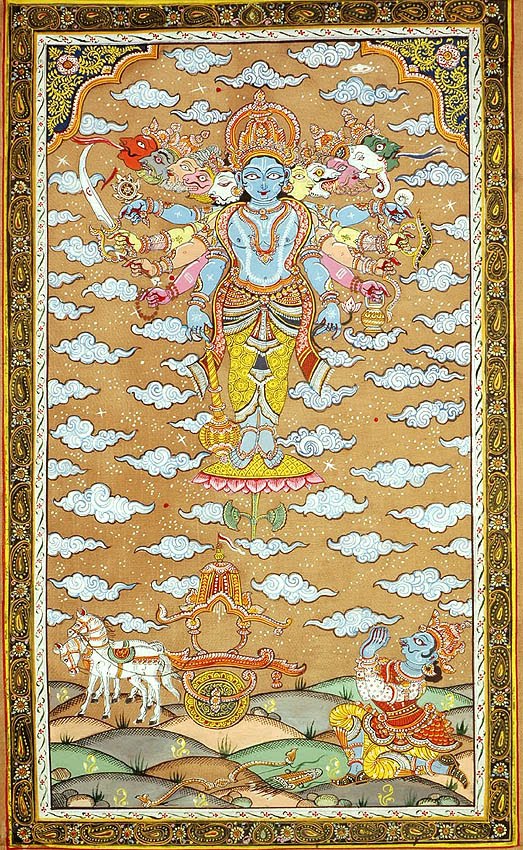
So all these four Vyahrutis should be meditated as all of their sixteen manifestations, this is known as famous vedic term Shodasha Kala Purusha in vedic literature. This way, each of first four Vyahrutis become four each and in total they are 16. "Mahah" denotes sun, moon, Holy Syllable OM and food. "Suvah" denotes heaven, sun, Yajus and Vyana. "Bhuvah" denotes space, air, Sama's and Apana. This Anuvak says that "Bhooh" denotes earth, fire, Richa's and Prana. Fifth Anuvaka states that the fourth Vyahruti "Mahah" was discovered by a Rishi called "Mahachamasya" and "Mahah" is Brahman all other Vyahrutis are its organs. The term "Vyahruti" means pronunciation, since these above mentioned words are pronounced in Vedic rituals like Agnihotra, these are called Vyahruti's. These denote different worlds in Puranas. The words "Bhooh", "Bhuvah", "Suvah", "Mahah", "Janah", "Tapah" and "Satyam" arecalled seven Vyahruti's or Sapta Vyahrutis.


In this anuvak teacher prays that " As water flows from high land to low land, as months join to become year, let good disciples come to me from everywhere" Fourth Anuvaka consists of Mantras and rituals to be done by those who aspire for Divine Knowledge ( Medha Kama) and Wealth ( Shree Kama)."Lower jaw is former form (or first syllable), upper jaw is next form (next syllable), speech is union or connection, tongue is connector" One of the example used under the heading of Self or Adhyaatmaa tries to make point that the connection between syllables is as intimate and innate as speech and elements producing it.

This anuvak also declares that one who realises connection between syllables, will get good fruits including heaven. There is also a method of reciting Vedic Mantras where each syllable of mantra is recited separately of preceding and next syllables known as " Samhita Patha". Each of these examples are called a Maha Samhita.


 0 kommentar(er)
0 kommentar(er)
